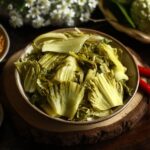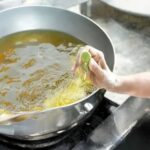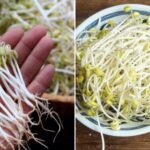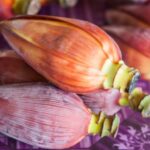How to Select the Freshest Pig Ears
To prepare perfectly boiled pig ears, the ingredient selection process is crucial. Look for pig ears with the following characteristics:
Color: Fresh pig ears are typically a natural pinkish-white, free from any greenish or blackish discoloration.
Elasticity: When pressed, fresh pig ears should have good elasticity and not feel soft and mushy.
Smell: Fresh pig ears will have the characteristic scent of pork and be free from any foul or strange odors.
Skin: The skin of fresh pig ears should be taut and glossy, without any scratches or unusual bumps.
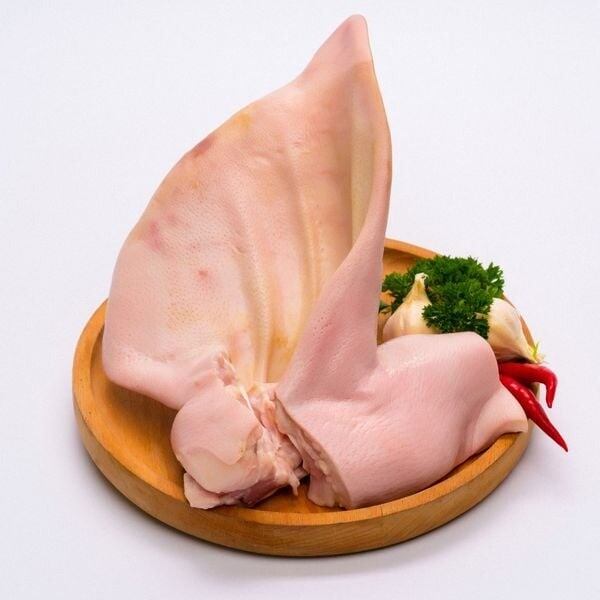
Preparation for Clean and Odorless Pig Ears
The following steps are crucial to ensuring that boiled pig ears are white and free from any unpleasant odors:
Thoroughly rinse the pig ears under running water to remove any dirt or debris.
Use a knife to carefully scrape away any hair and impurities from the surface of the ears, including the insides of the ears, to ensure hygiene.
Rub the pig ears with salt and lemon, then rinse with clean water. This step will help enhance the whiteness of the ears.
Soak the pig ears in a mixture of vinegar and lemon juice or just lemon juice for about 10-15 minutes. This step helps eliminate any unpleasant odors and tightens the cartilage, resulting in a crunchier texture.
Boiling Pig Ears to Achieve a White and Crisp Texture
Ingredients:
1-2 pig ears
1 knob of ginger
1 onion or a few shallots
1 teaspoon of salt
1 tablespoon of vinegar or lemon juice
Enough water to submerge the pig ears
Instructions:
Add water to a pot along with the crushed ginger, halved onion, and salt. Bring this mixture to a boil.
Once the water is boiling, add the pig ears and parboil for about 2-3 minutes to remove any scum. Remove the ears and rinse them in cold water.
Replace the water in the pot with fresh water and bring it to a boil again. Add vinegar or lemon juice to keep the pig ears white.
Place the pig ears in the pot and simmer for 20-25 minutes, depending on their size. As the water boils, skim off any foam that forms to ensure clearer broth.
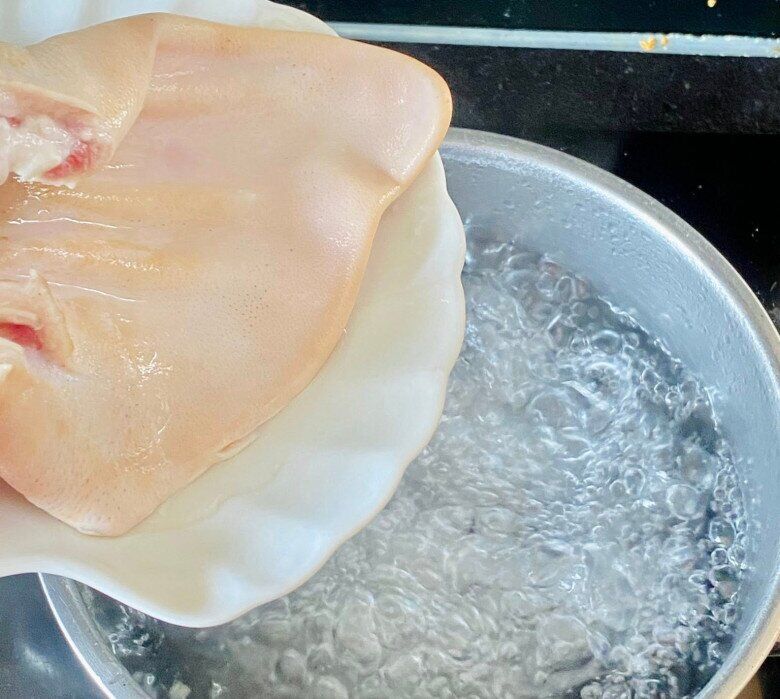
Ensuring Crispness and Maintaining Whiteness After Boiling
Immediately after removing the pig ears from the pot, immerse them in a bowl of ice-cold water with a few drops of lemon juice. The ice water helps halt the cooking process, resulting in crunchier and whiter ears.
Note: Avoid slicing the pig ears while they are still hot, as they tend to stick together and become soft.
Soak the pig ears in ice water for about 15-20 minutes, then remove them and let them air dry. Afterward, place the ears in the refrigerator for 1 to 2 hours to enhance their crispness.
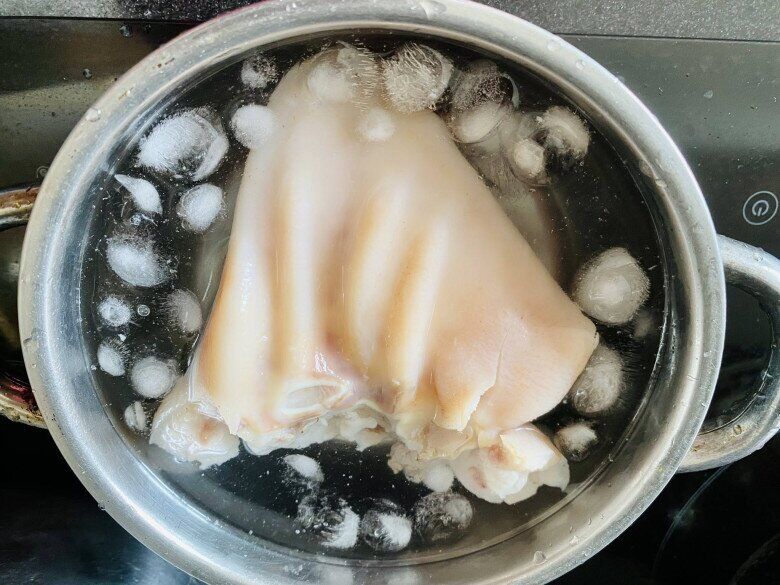
Slicing and Storing Pig Ears
Once the pig ears have cooled completely, place them on a chopping board and use a sharp knife to slice them thinly against the grain. Thinner slices result in crunchier textures.
If you’re not using the pig ears immediately, store them in an airtight container in the refrigerator. When needed, simply remove them from the fridge, slice, and use them in salads, or simply dip them in a spicy garlic and chili sauce.

In summary, to prepare boiled pig ears that are white, crisp, and delicious, just like those served in restaurants, pay attention to the selection of ingredients, the preparation process, boiling, and crisping techniques. Remember the key tips: use lemon and vinegar to maintain whiteness and soak in ice water for added crispness.
The Ultimate Guide to Chopping Banana Flowers: Keep Them White and Crisp for Longer
Banana blossom is a versatile ingredient that can be used in a variety of delicious dishes. It can be shredded and used in a nam sod, a traditional Thai salad, or tossed with your favorite greens for a refreshing twist. Simmer it in a hearty soup, such as bun rieu or bun bo, or stir-fry it for a quick and tasty meal. It’s also excellent in curries and stir-fries, adding a unique flavor and texture.

























